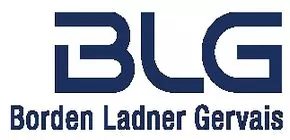- within Family and Matrimonial topic(s)
- with Senior Company Executives, HR and Finance and Tax Executives
- in Canada
- with readers working within the Accounting & Consultancy, Banking & Credit and Insurance industries
![]() and
Beverley Moore
and
Beverley Moore ![]() and
Adrian Howard
and
Adrian Howard
Patents
Patent found to claim a method of medical
treatment
Novartis Pharmaceuticals Canada Inc. v. Cobalt
Pharmaceuticals Company, 2013 FC 985
The Federal Court has dismissed an application to prohibit the
Minister of Health from issuing a Notice of Compliance to the
Respondent Cobalt in respect of a drug containing zoledronic acid
to be administered in once-yearly doses for the treatment of
osteoporosis in humans.
The Court determined that the discovery of an effective
once-a-year dosing for postmenopausal osteoporosis was not obvious.
However, the patent was found to be invalid for claiming a method
of medical treatment. The Court held that the patent fell within
the skill of a medical practitioner for claiming treatment using
various dosage ranges and intermittent timing.
Cobalt also asserted that the patent was ineligible for listing as
it does not contain a "claim for the use of the medicinal
ingredient" as required under the PM(NOC)
Regulations. The Court held that there were use claims meeting
the criteria for listing. Furthermore, it was considered to be
improper to raise this issue at the hearing itself, rather than by
way of a separate motion earlier in the proceeding. Cobalt knew the
issues and should have addressed them sooner.
Trade-marks
The MEDOS trade-mark was expunged for
non-use
Medos Services Corporation v. Ridout and
Maybee LLP, 2013 FC 1006
The trade-mark MEDOS has been expunged for non-use. Although new evidence was provided on appeal, it was not enough to show that the mark had been used within the three years in question. The telephone bills, correspondence, rental receipts and invoices were all alleged to show use, but the word MEDOS did not appear upon any of them. In some cases the evidence was found to be purely speculative.
Patent Appeal Board (PAB) decisions
- Patent Application No. 2,285,834
The PAB described this application as a system for selectively
interacting with postage meters has been found to be obvious in
light of the prior art. An earlier rejection for not being
statutory subject matter was not upheld, finding that the
"method steps utilize technology, and are sequenced to achieve
the practical result of selectively interacting with, and
replenishing, postage meters from a central computer."
Decision 1338 - Patent Application No.
2,304,195
The PAB described this application as a method for the analysis
and standardization of bills of resources. Bills of resources are
described as itemized lists of the requirements to perform a
particular task or procedure. The PAB questioned whether the
computer implementation element in the claims was essential or
non-essential. Although the application disclosed that it is
preferred that the method of the invention be practised in the form
of computer software, but the PAB saw nothing in the description of
the invention that necessitates the use of computer software.
Rather, the steps of the method may equally be performed by a human
being. Therefore, the patent was found to be invalid for claiming
non-statutory subject matter.
Decision 1339 - Patent Application No.
2,144,068
The PAB described this application as relating to automated
methods and systems to detect fraudulent financial transactions,
particularly in the use of credit cards. The application discusses
the use of a neural network, though any type of predictive modeling
technique may be used. The role of the computer in the claims was
found to not be material to the solution disclosed in the
application, and was not an essential element to the claim. On this
construction, the claims were found to be abstract and do not
define an invention.
Decision 1340 - Patent Application No.
2,248,228
The PAB described the application as relating "to methods of
producing hydrocarbon-expanded rigid polyurethane foams used, for
example, as an insulating material in the hollow spaces of domestic
refrigerators." The PAB did not find that the utility was
demonstrated across the whole claimed range. By using the
"heightened disclosure" standard for sound prediction,
recently questioned by the Courts, the patent was found to be
invalid for failing to disclose the line of reasoning.
Decision 1341 – Patent Application No.
2,222,229
The PAB described this application as setting "out a system
and method for electronic commerce (e-commerce) that separates
detailed merchant content from transaction functionality over
separate servers." The invention was considered to contain
statutory subject matter, as the involvement of a computer was
material to the manner in which the invention works. It was found
that all the elements of the inventive concept were a part of the
prior art, and therefore the claims were invalid for
obviousness.
The content of this article is intended to provide a general guide to the subject matter. Specialist advice should be sought about your specific circumstances.

